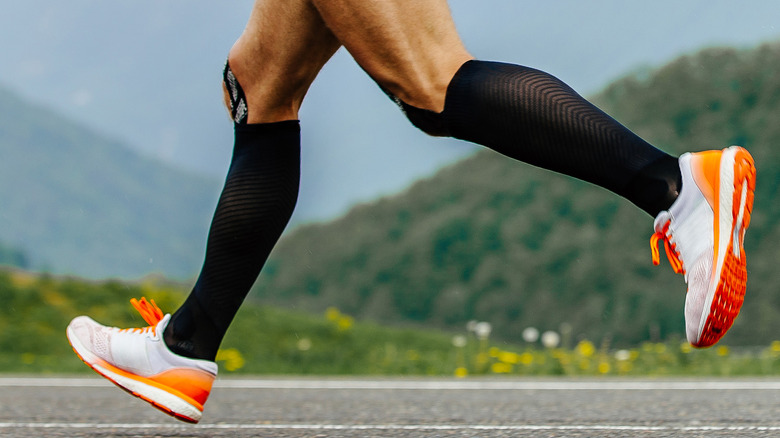Can Compression Clothing Actually Help Recovery After Exercise?
Popular brands like Under Armour, Nike, and Adidas offer different types of compression clothing, from tops and arm sleeves to shorts and tights. These garments are supposed to improve circulation and speed up recovery after exercise, leading to enhanced performance. At the same time, they compress and support your muscles, which may reduce injury risk during high-impact workouts, says Women's Health and Fitness. But can you really trust these claims?
First, it's important to understand that compression garments cannot replace a balanced diet and proper rest, which are essential for muscle repair. Your body needs a hefty dose of protein, carbs, and healthy fats to recover from training, explains the National Academy of Sports Medicine. Moreover, you need to stay hydrated to replace the fluids and electrolytes lost during exercise. As far as injury prevention goes, it's crucial to watch your form and use proper exercise techniques, regardless of what you wear.
With that being said, does compression clothing have any real benefits? Can it help with post-workout recovery and boost your performance?
Compression clothing may not live up to the hype
Post-workout recovery involves more than just taking a few days off training and sipping on protein shakes. In fact, there is an entire science behind it. A common practice among athletes is to wear compression garments during (and sometimes after) training. These products are designed to increase blood and oxygen flow to the working muscles during exercise and reduce muscle soreness post-workout, leading to faster recovery. However, there's not enough evidence to support their benefits, explains Sports-Health.
A recent review published in the journal Sports Medicine analyzed 19 different studies to determine the effects of compression clothing on post-exercise recovery. As it turns out, there are no tangible benefits of wearing compression garments during or after training. Subjects didn't recover faster from exercise, regardless of the type of garment used or the pressure applied. Researchers say that compression clothing may reduce exercise-induced inflammation, but the effects are negligible.
Moreover, compression garments are unlikely to decrease heart rate, increase oxygen uptake, or boost sports performance, according to Mid Sweden University. These products may benefit athletes with severe muscle damage, but their efficacy is subject to debate. In some cases, they might actually hamper sports performance by interfering with your body's ability to repair damaged tissues. Mid Sweden University recommends wearing compression garments when working out in cold weather so you can keep your muscles warm. In other circumstances, you'd likely be better off wearing a regular T-shirt and leggings.


